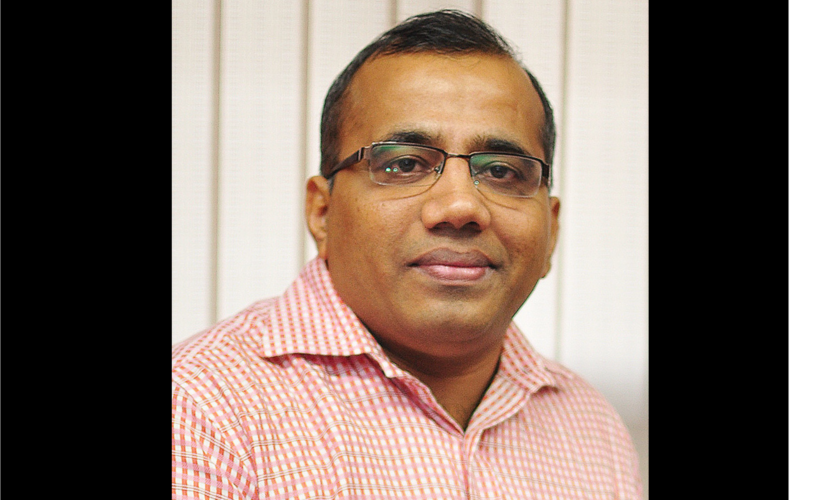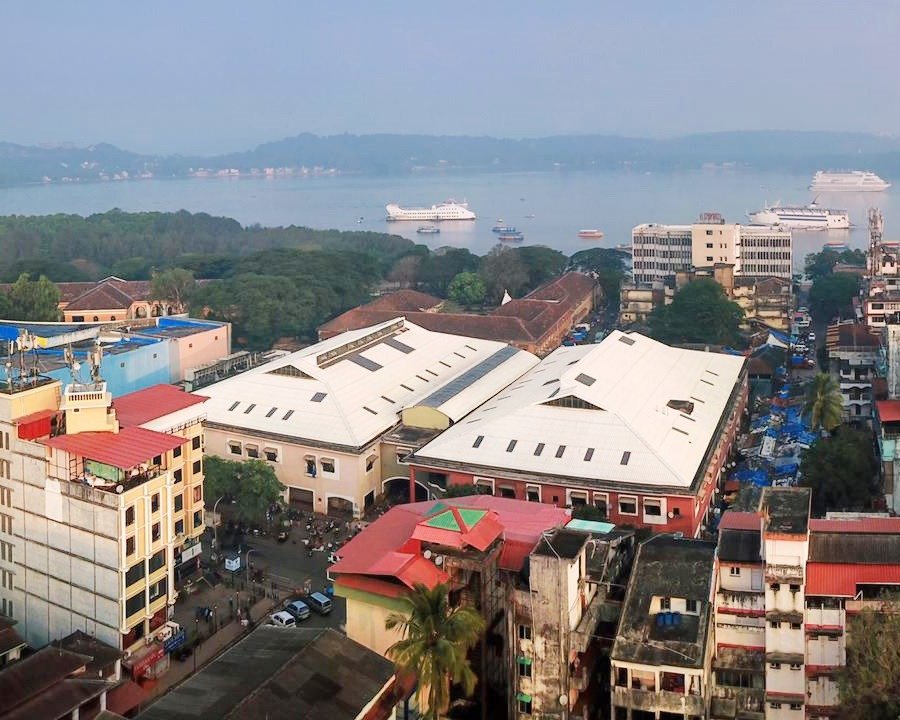
The uncontrolled urban sprawl has the potential to be detrimental to coastal regions creating irreversible damages and making valuable natural landscapes vulnerable
In the year 2030 more than half of the world’s population and almost close to 5 billion will be living in towns and cities. India has more than 4000 cities and towns which comprise 28 percent of India’s population and urban population has increased from 2.58 crores in 1901 to 37.71 crores in 2011. Worse, about two-fifths of India’s urban population live only in 35 metropolitan cities.
and almost close to 5 billion will be living in towns and cities. India has more than 4000 cities and towns which comprise 28 percent of India’s population and urban population has increased from 2.58 crores in 1901 to 37.71 crores in 2011. Worse, about two-fifths of India’s urban population live only in 35 metropolitan cities.
Unprecedented urbanisation
Goa has in the last few years seen unprecedented urbanization of her towns and villages. Today, Goa ranks amongst the top amongst all the smaller states to have such a huge percentage of population living in the urban areas. As per the latest 2011 census data (the next will be in 2021) reveals that Goa has the largest urban population with 62 percent among small States in the country and comparatively as per 2001 census it was mere 49 percent. Correspondingly, the percentage of population dwelling in urban areas of the state has increased significantly from 14.80 percent in 1961.
The number of people living in urban areas in 2011 was 906,814 compared to 670,577 in 2001. The latest census figures reveal that there is a 35.23 percent increase in urban population and corresponding decrease of 18.51 percent in the rural areas. Another point to note is of heavy immigration from other States as the number of workers in the state has increased the population and has infused a rise of 8.23 percent. The overall population growth however has seen a decline from 15.21 percent during 1990-2001 to 8.23 percent during 2001-11.
Goa’s urban population has relatively increased in North Goa (district) from 45.05 in 2001 to 60.25 percent in 2011 relative to the South, from 55.83 to 64.63 percent. The concentration of relatively more tourists towards the North and higher outflow of out-migration from Salcette in the South towards foreign destinations abroad, are two prime reasons for this trend. This has consequently led our northern parts of the economy to be dependent on tourism and as a result increased the economic interests of capitalists from Delhi, Punjab, Haryana and Gujarat in Goa. Though Goans obviously benefitted with higher prices they got by selling away their ancestral lands, orchards and businesses, the increasing dependence on easy interest income from deposits and rents grossly depletes the entrepreneurial ability among Goans. The worst to suffer are the Goan middle class in this ordeal finding accommodation and standard of living expensive and faced with limited choices for growth.
Changing profile of Goa
This trend has significantly affected traditional occupations of fishing and agriculture. Catholic community from Salcete, Bardez, Tiswadi abroad who earlier preferred to settle at Zambia- Mozambique, Karachi, Gulf, and Portugal now are increasingly moving towards UK, Canada, Australia, Germany while the increasing number of educated youth from Hindu middle class families prefer Pune, Mumbai, Bangalore and Hyderabad for education and IT employment opportunities.
The other problems arising from increasing urbanisation are that of indecent conversion of agricultural lands in to non-agricultural, mass deforestation, razing of ancestral properties and more investments in apartments. The quest for a city home has led to investments in apartments not intended to stay or rent, and therefore remaining locked. This scale has risen so that Goa has the highest proportion of locked houses in the country, as much as 1.4 percent. Other States trail far behind. Lakshadweep and Meghalaya occupy the second spot with 1.1 per cent of their houses locked while bigger states such as Uttar Pradesh, Bihar and Rajasthan, routinely witnessing migration by individuals and families to big cities in search of work have significantly lower proportions of locked houses. Comparatively, less than 0.5 per cent of houses in states such as Assam, Andhra Pradesh, Bihar, Jharkhand, Karnataka and Madhya Pradesh are locked.
Goa had just 5 towns in 1950, around 38 of them in 2001 which has now gone up to 62 in 2011. Now that the towns are being classified in 6 categories from Class 1 to Class 6, in Class 1 to 3 the number of towns in Goa have gone up from 5 to 7 while for the remaining classes it has increased from 30 towns in 2001 to 56 in 2011. Thus the major consolidation of population is most common in relatively smaller towns. This is mostly due to emergence of satellite towns, and increased housing cost in cities spreading residential areas at the outskirts. Once can relate this to the fast pace of urban settlements in Chicalim, Dabolim, Agassaim, Zuarinagar, Sancoale in Mormugao; Navelim, Jaycenagare / Silvanagar, Curti, Tisk Usgaon, Kurtarkarnagri town ship in Ponda, Shirvodem-Fatorda-Aquem-Borda, in Margao; Navelim, Panzorconni-Cuncolim, Barde and Sarvan in Bicholim, Merces, Kadamba bypass, Pundalik nagar to Succor / Penha De France, Mardol, Banastari-Khandola as its apt examples. Worst has been the issue of garbage collection and disposal in such satellite towns. Plastic trash on the roads is rampant so are the scrap yards, the never ending road digging for sewers and other utilities.
Some new towns like that of Cuncolim, Vasco, Tivim, Amona and Verna have seen relatively more migrants while slums in places like Indiranagar in Chimbel, Zuarinagar in Vasco, Motidongor, Babunagri, and Khareband, Kargil in Curtorim, Bandh area at St Cruz and Babushnagri in Mapusa have become dens for criminals and with all of these, grossly contributing to the worst eyesore.
Unfortunately for Goa, our planners have not been able to add more clean corners and beauty spaces for public socialising and recreation, or any artistic structures or parks worth mentioning. Power failures are common and taps run dry even during the monsoons. Our industrial estates and mega projects in Bambolim, Kadamba plateau and near MES College at Zuarinagar continue to incessantly suck out water through illegal bore wells.
No attention has ever been paid for provision of clean public toilets, planting trees along side roads and de-siliting of water bodies. Roads and traffic jams make travel worse and the stress caused by rapid urbanization with air pollution, communicable diseases, and increasing accidents. All this requires a holistic solution.
The census data show that Goa’s houses grew three times in relation to its decadal population growth which was at 8.2 per cent. Higher demands for city housing in Goa have propelled its higher supplies and more constructions. Madhya Pradesh, on the other hand, had a decadal population growth of 20.5 per cent, but its houses grew by one-and-a-half times. Similarly, Rajasthan’s population grew by 21.3 per cent, but its houses by 39.6 per cent, while Bihar’s 25.4 per cent population growth was matched by 43 per cent increase in its houses.
Goa has in the last few years seen unprecedented urbanization of her towns and villages. There is rampant haphazard construction without taking into consideration if we have the resources to cope with the growing population. The lack of delivery of these basic services by the local bodies, Municipality and Gram Panchayats has always remained poor. The uncontrolled urban sprawl has the potential to be detrimental to coastal regions creating irreversible damages and making valuable natural landscapes vulnerable. Are our planners and policy makers listening?





